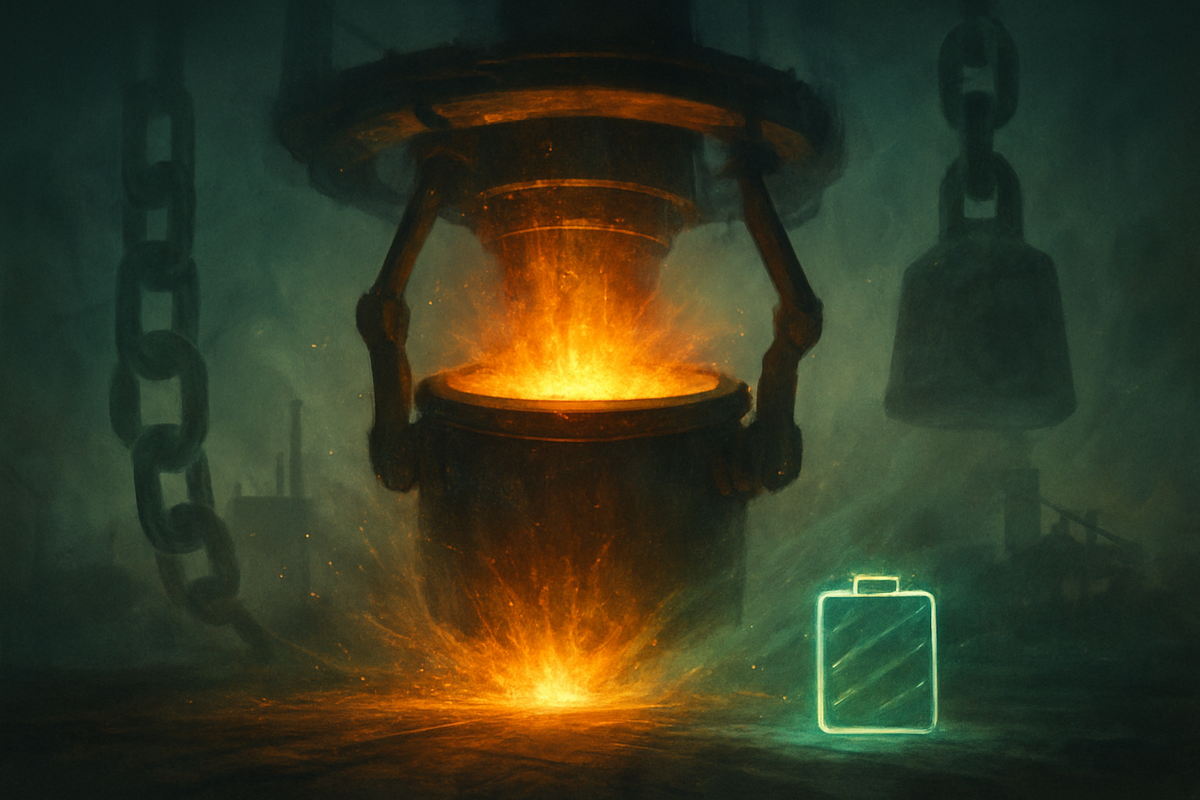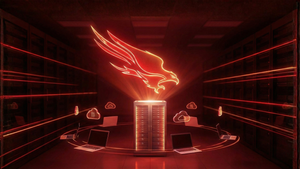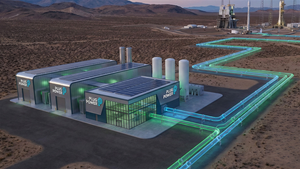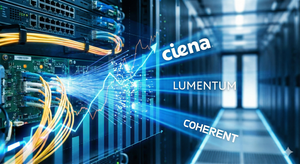
GrafTech International (NYSE: EAF), a leading manufacturer of high-quality graphite electrode products essential for electric arc furnace (EAF) steel production, finds itself at a critical juncture in late 2025. While the company has demonstrated operational resilience through increased sales volumes and stringent cost controls, it continues to grapple with a substantial debt load and intense global competition, primarily from low-priced Chinese exports. Its fortunes are inextricably linked to the broader industrial commodity cycle, particularly the ongoing transformation within the global steel industry towards more sustainable EAF methods.
The immediate implications for GrafTech are a balancing act between leveraging long-term industry tailwinds and mitigating near-term market pressures. The company's recent Q3 2025 performance, while showing improvements in sales and EBITDA, underscores the persistent challenge of achieving sustained profitability in a market characterized by overcapacity and aggressive pricing. This environment demands strategic agility and continued operational excellence as GrafTech strives to capitalize on the decarbonization trend in steelmaking while managing its financial obligations.
Detailed Market Dynamics and GrafTech's Strategic Response
GrafTech International's third-quarter 2025 results painted a picture of a company making strides operationally, yet still caught in a challenging market. The company reported net sales of $144 million, a 10% increase year-over-year, buoyed by a significant 9% rise in sales volume to 28.8 thousand metric tons, with particularly strong growth in the United States. Adjusted EBITDA turned positive at $13 million, a marked improvement from a negative $6 million in the prior-year period, and cash cost of goods sold per metric ton saw a 10% reduction. Despite these operational wins, GrafTech recorded a net loss of $28 million, highlighting the persistent pressure on pricing.
The timeline leading to this moment reveals both financial maneuvers and market shifts. In August 2025, GrafTech executed a 1-for-10 reverse stock split to maintain compliance with NYSE listing requirements, reflecting investor concerns. Critically, the company has managed to push out substantially all of its debt maturities until December 2029, providing some breathing room to navigate its $1.125 billion gross debt. However, the market for graphite electrodes remains saturated, with an "unsustainably high level of excess electrode capacity," largely fueled by exports from China. This competitive landscape was further underscored in September 2025 when Graphite India Limited (NSE:GRAPHITE) acquired a 6.82% stake in GrafTech, signaling strategic interest in the global graphite electrode sector. Key stakeholders include GrafTech's management, shareholders, bondholders, the global steel industry, and rival graphite electrode producers. Initial market reactions have been cautious, acknowledging the operational improvements but remaining wary of the severe pricing pressures.
Winners and Losers in a Shifting Industrial Landscape
In this evolving scenario, several entities stand to win or lose. GrafTech International (NYSE: EAF) itself is in a precarious position. While its vertical integration into petroleum needle coke, a critical raw material, offers a significant competitive advantage by ensuring supply and potentially diversifying into the burgeoning electric vehicle (EV) battery market, the company's profitability is severely hampered by oversupply and intense pricing pressure, particularly from Chinese manufacturers. The long-term growth of EAF steelmaking is a clear tailwind, but converting that demand into profitable sales remains the immediate challenge.
Competitors, such as Graphite India Limited (NSE:GRAPHITE) and Showa Denko (TYO:4004), are also navigating this complex environment. While they too face competitive pressures, strategic moves like Graphite India's stake acquisition in GrafTech suggest a potential for consolidation or aggressive market positioning. Companies with superior cost structures, advanced manufacturing capabilities, or strong regional market positions may be better equipped to weather the storm. Conversely, smaller, less integrated players may find it increasingly difficult to compete on price and scale.
Steel manufacturers, particularly those relying on EAF technology, are current beneficiaries of the competitive graphite electrode market. Lower input costs for electrodes can improve their margins, especially in a period of fluctuating steel prices. However, if overcapacity leads to significant consolidation or exits from the market, future supply stability could become a concern. The shift towards EAF steelmaking, driven by decarbonization efforts, ultimately benefits the entire EAF ecosystem, but the profits are not evenly distributed among its participants.
Broader Industry Trends and Historical Context
GrafTech's current predicament is not an isolated event but rather a microcosm of broader trends sweeping through the industrial commodity sector. The most significant trend is the decarbonization of heavy industry, particularly steel. The global push to reduce carbon emissions is accelerating the adoption of EAF technology over traditional, more carbon-intensive blast furnaces. This structural shift is a powerful long-term driver for graphite electrode demand, projecting the global market to grow from $11.60 billion in 2025 to $16.68 billion by 2033, with Ultra-High Power (UHP) electrodes, GrafTech's specialty, leading the charge.
However, this positive long-term outlook is currently overshadowed by global trade imbalances and overcapacity. The influx of low-priced graphite electrode exports from China has disrupted market equilibrium, creating a challenging pricing environment across most of GrafTech's principal commercial regions. This situation has historical precedents in various commodity markets, where periods of high demand lead to increased investment and capacity expansion, eventually resulting in oversupply and subsequent price collapses. Such cycles often lead to consolidation, bankruptcies, and a renewed focus on efficiency and cost control.
Regulatory and policy implications also play a crucial role. Trade policies, such as recently announced measures in the European Union and favorable domestic policies in the United States, are expected to bolster regional steel production and, by extension, demand for graphite electrodes. These policies can create regional pricing disparities and influence manufacturers' sales strategies, as GrafTech's pivot towards stronger U.S. pricing dynamics demonstrates. The dual pressures of environmental mandates driving demand and trade policies influencing supply dynamics create a complex operating environment for companies like GrafTech.
The Road Ahead: Opportunities and Challenges
Looking ahead, GrafTech International faces both significant challenges and compelling opportunities. In the short-term, the company will likely continue to battle intense pricing pressures and overcapacity. Its focus will need to remain on rigorous cost control, optimizing its manufacturing footprint, and strategically managing its geographic sales mix to prioritize regions with better pricing dynamics, such as the United States. Managing its substantial debt load will also be a continuous effort, despite the extended maturities.
The long-term outlook, however, presents a more optimistic picture. The relentless global drive towards decarbonization ensures a growing demand for EAF steelmaking, which directly translates to increased consumption of graphite electrodes. GrafTech's vertical integration into petroleum needle coke not only secures its raw material supply but also opens up potential new market avenues, particularly in the rapidly expanding electric vehicle (EV) battery sector, where synthetic graphite derived from needle coke is a key component. This diversification could provide a crucial hedge against steel market volatility and unlock new revenue streams.
Potential strategic pivots for GrafTech could include further technological innovation to enhance electrode performance, exploring new applications for its needle coke expertise, and potentially participating in industry consolidation if opportunities arise. Market opportunities will emerge as steel demand growth solidifies in regions like the EU and U.S., potentially leading to a drawdown of current low graphite electrode inventories. Challenges will persist in managing the competitive threat from regions with lower production costs and adapting to evolving global trade relations. Scenarios range from a gradual market rebalancing driven by EAF growth and capacity rationalization to continued pricing wars that could force further industry consolidation or restructuring.
Comprehensive Wrap-Up and Investor Outlook
GrafTech International's journey through 2025 is a testament to the complexities of operating within global industrial commodity markets. The company has demonstrated resilience through operational improvements and strategic debt management, even as it contends with the formidable headwinds of overcapacity and aggressive competition from Chinese exports. The overarching narrative remains one of a company with a strong foundational product benefiting from a powerful long-term industry trend – the decarbonization of steelmaking via EAF technology. Its vertical integration into petroleum needle coke further solidifies its position and offers potential for future diversification.
Moving forward, the market will assess GrafTech's ability to translate the growing demand for EAF steel into sustainable profitability. The key takeaways are GrafTech's operational improvements and strategic debt extensions, which provide a foundation, but also the persistent pricing pressure from global oversupply. Investors should closely monitor several factors in the coming months: the company's Q4 2025 and full-year 2026 guidance, any shifts in global trade policies impacting steel and graphite electrodes, progress on further debt reduction or refinancing, and any concrete steps towards diversifying its needle coke applications into new markets like EV batteries. The interplay between global steel demand, EAF adoption rates, and the dynamics of international trade will ultimately dictate GrafTech's trajectory.
This content is intended for informational purposes only and is not financial advice







